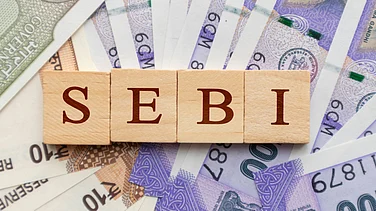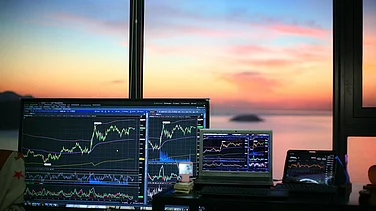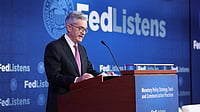Investors flocked towards gold, the safe haven in search for safety amid tumultuous times as a boiling trade war between China and the US triggered caution across the globe. Uncertainty reached new highs, with the two largest economies going neck-to-neck on upping tariffs on exports from the other.
In the backdrop of rising global turmoil, investors saw the yellow metal as a safety net which took it to a record high on April 11. A significant drop in the dollar index in recent times also raised the allure of the yellow metal, making it cheaper for non-dollar denominated nations.
Additionally, global gold ETF inflows rose for a fourth consecutive month in March, accompanied by continued central bank buying. As global trade tensions heat up, central banks have also hopped on to buy more gold to lift up their reserves for safety.
Aside from gold being a safe haven that can retain its value in times of utmost global uncertainty, a surge in prices of the metal more often than not, hint at an underlying widespread fear amongst the investor class. In times of economic turmoil, the yellow metal presents itself as a solid hedge and hence, its uptick in recent times suggests the growing investor anxiety over the possible shift in the global trade.
US-China Trade War
US President Donald Trump declared his intention when he first imposed a 20% tariff on Chinese exports, eventually taking it to 54%, then 125% and at last 145%. In retaliation, China also walked the talk and slapped a 125% tariff on US imports. Touting the aggressive tariff imposition on China as ‘unilateral bullying’, the world’s second largest economy released a statement that it will now go on to ignore any more tariff hikes undertaken by the US.
“Given that American goods are no longer marketable in China under the current tariff rates, if the US further raises tariffs on Chinese exports, China will disregard such measures,” the statement said.
Worsening trade relations between the two economies pose a threat to the global economy. For UBS, the principal worry remains a tit-for-tat conflict.
With goods from China and US no longer being marketable in the other country, the excess supply may flood alternative markets, especially of Chinese goods. With China being one of the world’s major exporter, over-dumping of Chinese products, could disrupt global trade dynamics, depress prices, and hurt growth across multiple sectors.
Tariff Pause, Not A Respite
Even as the US President announced a 90-day pause for reciprocal tariffs that he imposed on select trade partners, the issue at core remains far from over. The 90-day pause is also not a complete respite as a blanket tariff of 10% will still be applied on all US imports.
Then there’s also a sea of uncertainty over the full impact of the proposed tariffs, how trade partners may retaliate and its ripple effect on the overall global economy.
To that effect, analysts at global research firm UBS Securities believe any sell-off in gold offers a good opportunity for investors looking to build exposure to an asset that will continue to offer portfolio diversification benefits, particularly against downside tariff, geopolitical, or economic scenarios.
US Recession
The old adage, “When the US sneezes, the world catches a cold,” aptly captures the far-reaching influence of the American economy. In that context, Trump’s sweeping tariff measures have only intensified fears of an impending US recession, triggering panic among global investors over potential spillover effects on the broader world economy.
Given the rapid pace at which Trump has rolled out new tariffs, inflationary pressures could soon mount in the US, possibly prompting the Federal Reserve to cut interest rates as the economy slows down. The concerns have already wiped out billions of dollars out of US equities.
Meanwhile, a weakening dollar may drive investors toward another traditional safe haven—gold.






.jpg?w=801&auto=format%2Ccompress&fit=max&format=webp&dpr=1.0)




















